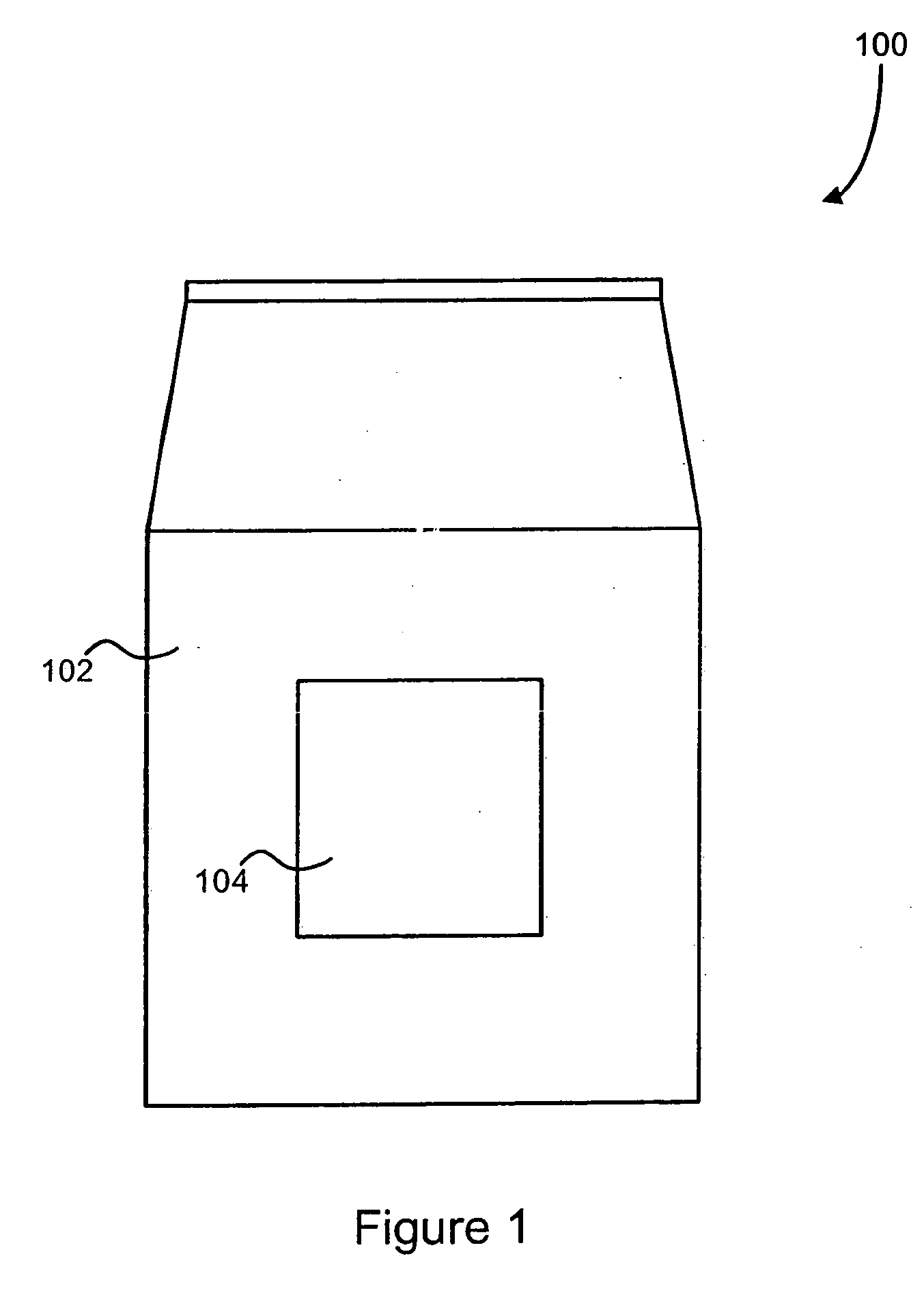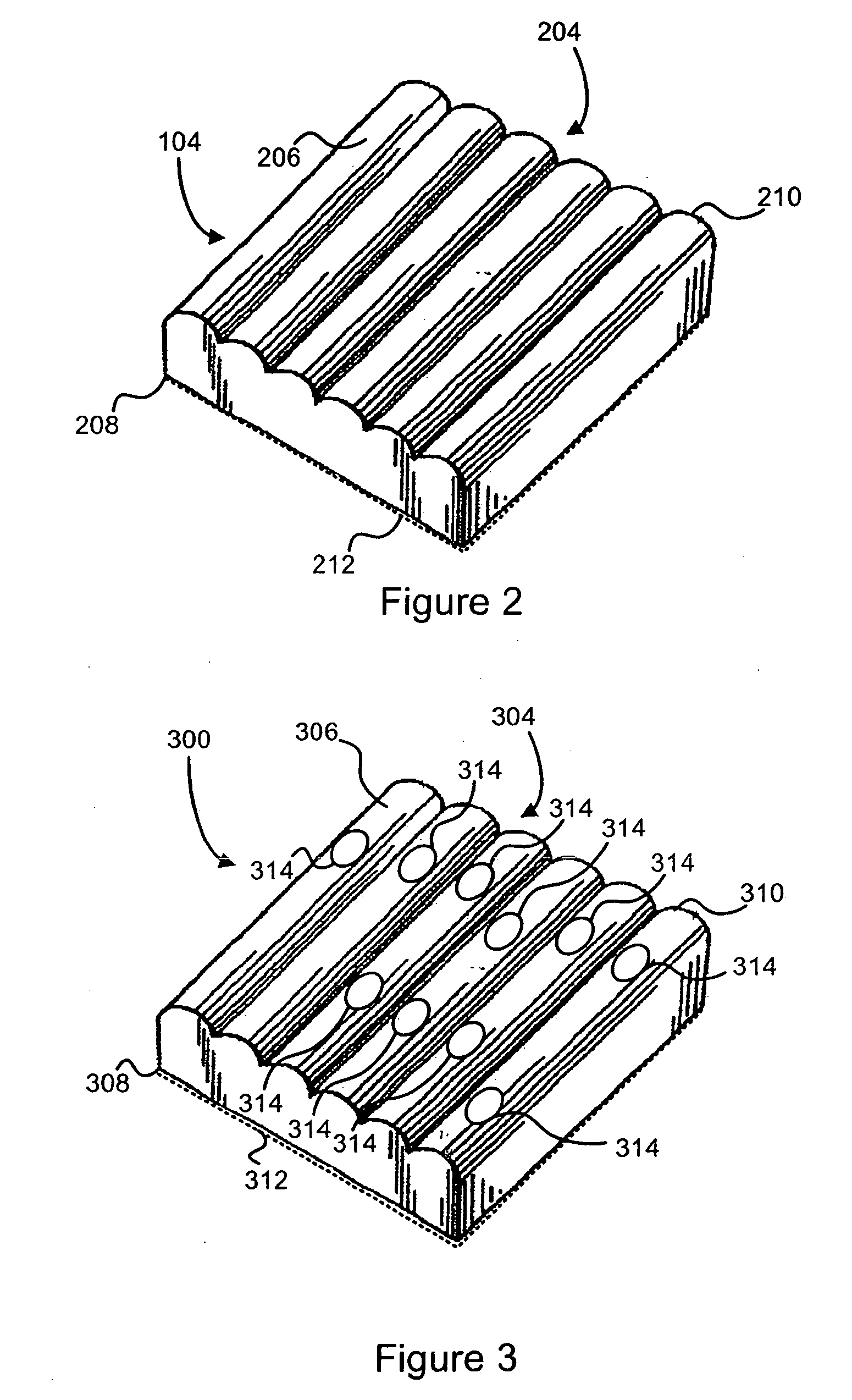Microlens windows and interphased images for packaging and printing and methods for manufacture
a technology of interphased images and microlens, which is applied in the field of packaging and printing, can solve the problems of difficult fraudulent reproduction of visual information in the end product, less eye-catching appeal, and difficulty for unauthorized producers to create the same packaging, so as to increase the marketability of the package
- Summary
- Abstract
- Description
- Claims
- Application Information
AI Technical Summary
Benefits of technology
Problems solved by technology
Method used
Image
Examples
example 2
[0064]The microlens window is made from the same material as in Example 1, but the lenticules are parabolic lenses with a shoulder. The total thickness of the microlens window is 5 mils.
example 3
[0065]The microlens window as in either Example 2 or Example 3 is used with a three-dimensional inter-dispersed with a motion (flip) segment.
example 4
[0066]A multi-dimensional piece is designed with clear areas incorporated into the graphical images. Clear areas of different sizes as well as clear areas in a logo are incorporated so there is a discontinuous clear area in all portions of the microlens window. The graphical images are printed on the microlens window as described herein. The graphical image area in non-clear areas is composed of 12 frames. The white opacity area is printed behind all non-clear areas. This product is seen through the “designed in see-through areas.” The advantage is that there exists less alignment in the printing of deeper richer images, thus providing an eye-catching motion and eye-retention three-dimensional images and clear see-through images dispersed through-out the packaging.
PUM
| Property | Measurement | Unit |
|---|---|---|
| thickness | aaaaa | aaaaa |
| thickness | aaaaa | aaaaa |
| total thickness | aaaaa | aaaaa |
Abstract
Description
Claims
Application Information
 Login to View More
Login to View More - R&D
- Intellectual Property
- Life Sciences
- Materials
- Tech Scout
- Unparalleled Data Quality
- Higher Quality Content
- 60% Fewer Hallucinations
Browse by: Latest US Patents, China's latest patents, Technical Efficacy Thesaurus, Application Domain, Technology Topic, Popular Technical Reports.
© 2025 PatSnap. All rights reserved.Legal|Privacy policy|Modern Slavery Act Transparency Statement|Sitemap|About US| Contact US: help@patsnap.com



